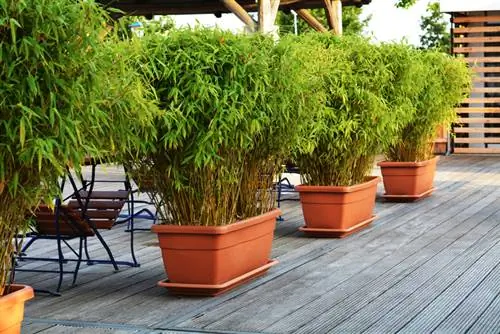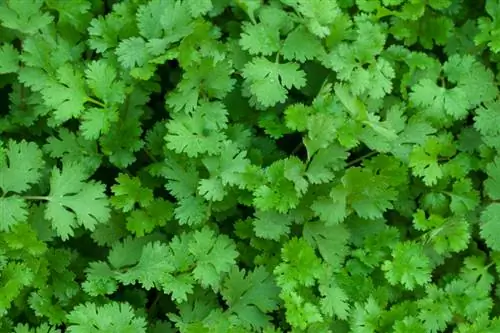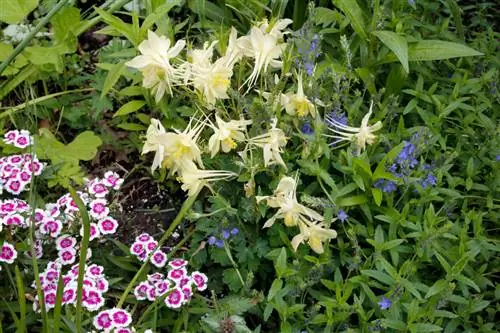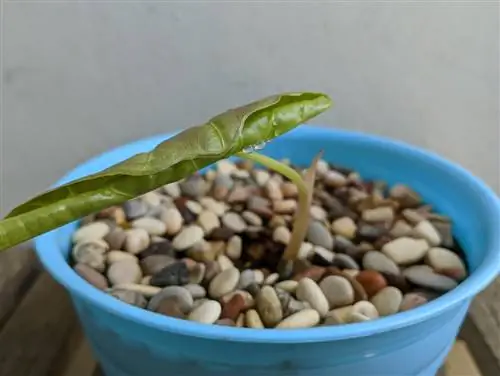- Author admin [email protected].
- Public 2023-12-16 16:46.
- Last modified 2025-01-23 11:20.
The indoor bamboo, which is not only widespread in Asia, is also known as Seychelles grass or bamboo grass. It belongs to the sweet grass family and is only very distantly related to the giant bamboo. Its botanical name is Pogonatherum paniceum.
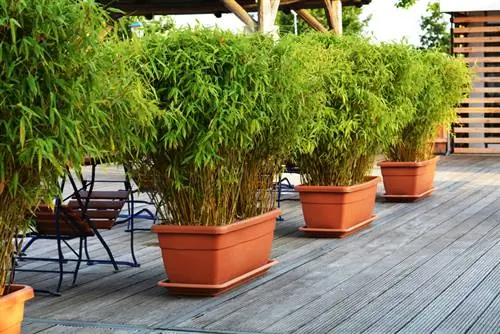
How do I properly care for indoor bamboo?
The care of indoor bamboo includes a bright and warm location, high humidity, regular watering in small quantities, fertilizing, spraying with lime-free water, warm overwintering and limited protection from diseases and pests.
In addition to Seychelles grass, other types of bamboo are also suitable for keeping in the apartment. Classically, this is, for example, the lucky bamboo or Lucky Bamboo. It has similar requirements for its location as the indoor bamboo, but can also be kept in a vase.
Planting the indoor bamboo
You can use normal potting soil for indoor bamboo. If you prefer, use garden soil and then mix in some sand or granules. Choose a location that is bright and warm, preferably with high humidity. In principle, the bathroom is well suited, but bathrooms are not always bright enough. It is easier to adjust the required humidity by spraying your indoor bamboo frequently with lukewarm, lime-free water.
Water and fertilize the indoor bamboo
Although the indoor bamboo is quite thirsty, that shouldn't tempt you to give it large amounts of water. It is beneficial to water this plant more often, but only slightly. This way you avoid both waterlogging and drying out of your indoor bamboo. Rainwater is particularly suitable for watering Seychelles grass. If this is not available, then use stale tap water with the lowest possible lime content.
Approximately every two to four weeks, add a little liquid fertilizer (€6.00 on Amazon) to your watering water for the indoor bamboo. He is quite hungry and needs a lot of nutrients. When the lighting conditions change in winter, the indoor bamboo remains dormant and does not need fertilizer. It can then be left a little cooler.
Propagate the indoor bamboo
The easiest way to propagate indoor bamboo is to divide it during the annual repotting in spring. You can also take root cuttings on this occasion. However, these are not necessarily easy to care for and may grow poorly.
Pests and diseases of indoor bamboo
Most problems with indoor bamboo arise from errors in care. Too much moisture or a location that is too cool can easily lead to rot. This is even more true when both come together and the ventilation of the room is perhaps neglected. Otherwise, the indoor bamboo is quite resistant to diseases and pests. Occasionally it suffers from spider mites or aphids, which can be easily controlled.
The most important things in brief:
- keep it bright and warm
- prefers high humidity
- water regularly in small quantities
- fertilize regularly
- spray with lime-free water if necessary
- winter warmly
- resistant to diseases and/or pests
- Propagation is a bit difficult
Tip
With the right choice of location and balanced watering and fertilizing, you have done everything you can to ensure he althy growth for indoor bamboo.

